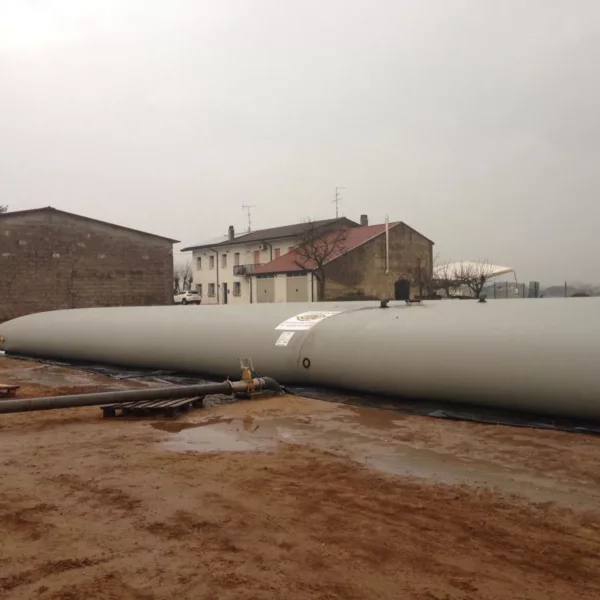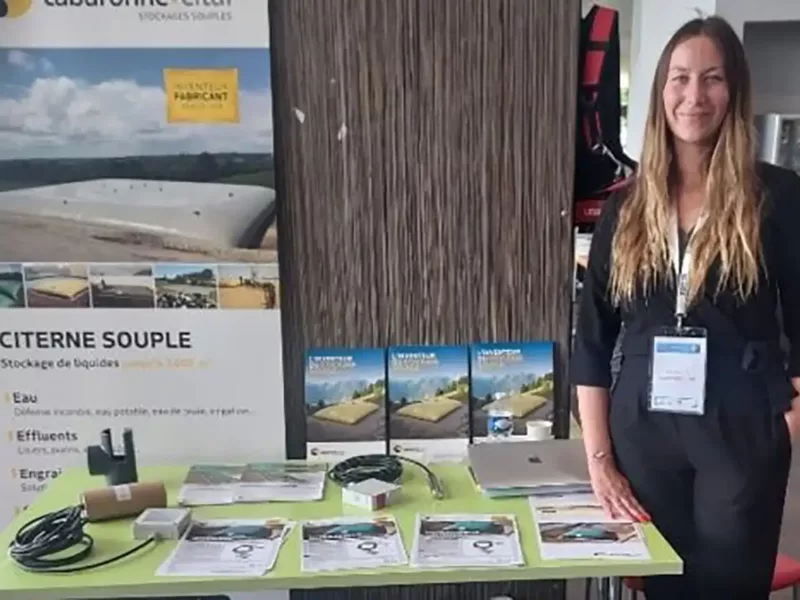Labaronne-Citaf installs a 2,000 m3 tank in Italy!
After Bangladesh, the Middle East and France, it is Italy’s turn to welcome its first flexible tank of 2000 m3. Labaronne-Citaf has responded to a request from a farmer seeking to increase the storage capacity of his biogas plant.
This very recent project is a real coup de force for the French company, which reinforces its international influence and strengthens its expertise on large-scale projects.
An attractive alternative to concrete vats
The Italian client of Labaronne-Citaf is a farmer in Northern Italy, producing turf and tobacco. He also owns several bull farms, which he leases. It recovers the manure from these farms to feed its biogas unit of 1 MWh (Mega Watt hour).
Recently, this farmer ran into a storage problem: the concrete tanks of his biogas plant were no longer sufficient to store the digestate – the residue of the anaerobic digestion process. To meet his needs, it was therefore necessary to consider the construction of a new tank 6m high. Environmental services did not give him permission. Involved: a landscape impact too important. To compensate for this refusal, he then went in search of another solution.
Having heard about flexible tanks from one of Labaronne-Citaf’s partners, he was seduced by their flexibility and low maintenance costs. So he chose to buy a flexible tank, and not least: 2000 m3 and in one piece!
The installation of the tank has aroused the curiosity of the neighborhood and other farmers, to that of the leaders of the region who have moved to the site to discover this new solution. All have found this product very interesting, that the spread of odors is limited and that despite the space occupied on the ground, the tank is little “invasive”. It fits in the landscape.
The flexible tank: an economical and practical storage solution
Flagship product of Labaronne-Citaf, the flexible tank is at the origin of the company. This storage solution, sometimes called flexible tank, flexible tank or flexible tarpaulin, is more economical and practical than a hard reserve.
The tanks of Labaronne-Citaf come from the assembly of fabrics of technical fabrics composed of a polyester fabric coated with PVC or PU, with a UV treatment on both sides. Once filled, a flexible tank looks like a big pillow, which earned it the name “tanker pillow”.
These innovative tanks can be used for the transport or storage of liquids. As it is a completely closed storage, the liquid is protected from air and light, thus avoiding any evaporation, external contamination or algae growth. Flexible tanks can be installed quickly without a building permit. A properly installed cistern offers a long-lasting storage solution of several decades.
Reactivity and flexibility
Each time the company Labaronne-Citaf was asked for the manufacture of a tank of 2000 m3, it was to answer an urgent need. These tanks are true technical feats, which mobilize all the skills of the company, from design to production.
They are manufactured in record time to meet the constraints imposed by customers and meet the deadlines beyond standard delivery. The challenge has always been raised, sometimes with a week’s delay, or even a few days for the project in France.
Labaronne-Citaf: an increasingly export-oriented company
With nearly 60 years of experience, Labaronne-Citaf is regularly asked for projects pushing the limits of flexible, in France but also internationally. In fact, the holders of large storage projects are looking for safe values. And the influence of the brand goes beyond our borders, pushing its notoriety to the four corners of the world.
Inventor of flexible storage, Labaronne-Citaf is both a true commercial support, an integrated design office, a technical service and a qualified installation team. The company has a team of sales representatives who meet customers in France and abroad. It also brings the guarantee of 100% made in France. All of its products are custom-made at its Pont-Evêque plant in Isère.
Only Labaronne-Citaf can provide the guarantees and services needed for flexible storage solutions. And this responsibility is even more important when the projects are substantial and/or risky.

